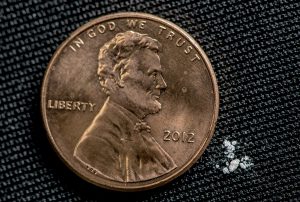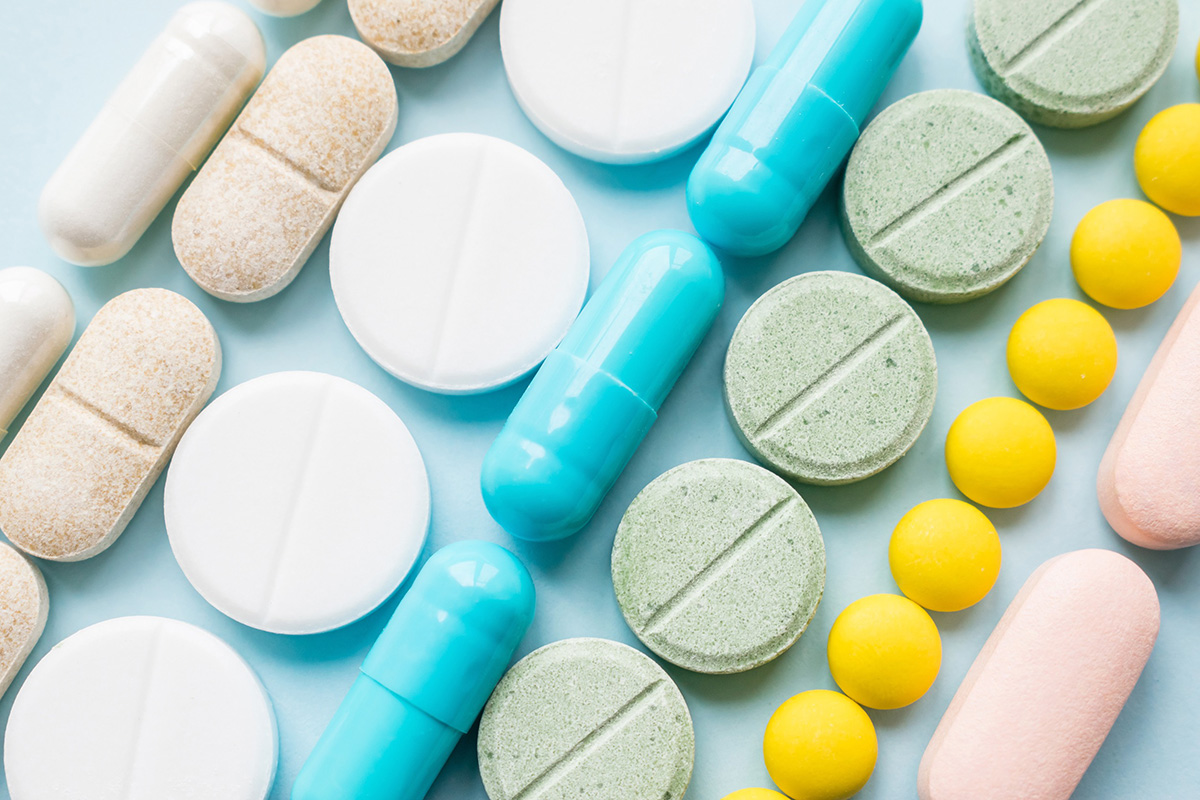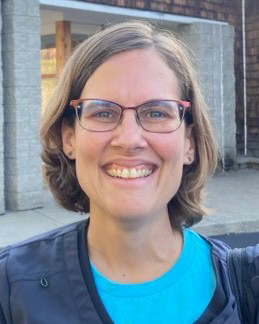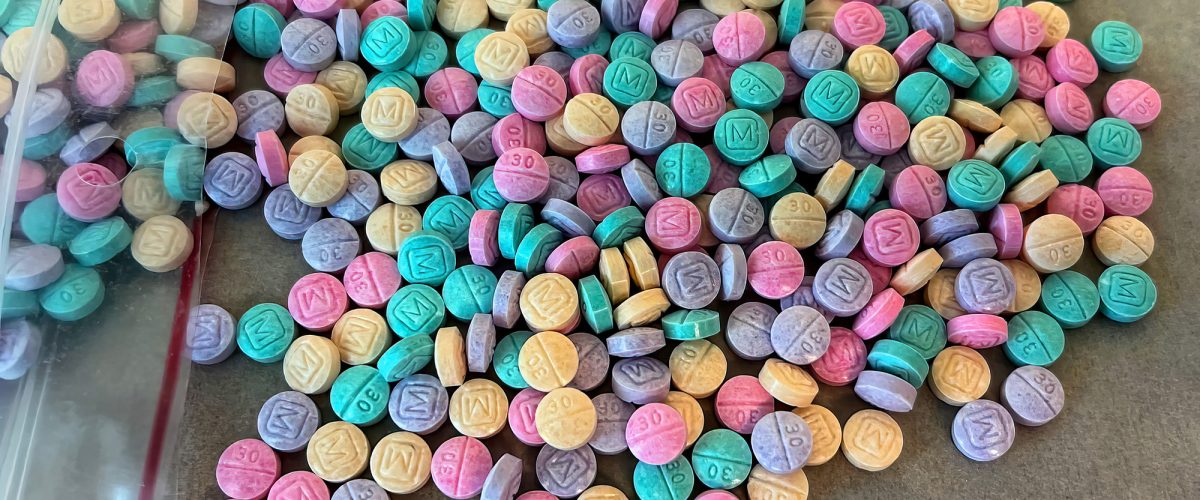Imagine the entire population of a city the size of Peoria, Ill., suddenly vanished.
What if half the residents of Richmond, Va.; Huntsville, Ala.; or Tacoma, Wash., turned to the person next to them and that person was gone?
As sensational as it may sound, this isn’t the plot of a new Netflix series. Last year, according to the U.S. Centers for Disease Control, 110,236 people died of drug overdoses in the United States. During the pandemic, fatal overdoses from fentanyl alone escalated by 94% — to the point that 196 Americans a day are currently dying from the drug.
That’s a Boeing 737 crashing daily, leaving no survivors.
“This crisis is rarely mentioned in many of our churches.”
Deaths from synthetic-opioid overdoses now outnumber the deaths of U.S. military personnel killed in Vietnam, Iraq and Afghanistan combined; yet this crisis is rarely mentioned in many of our churches. Families suffer these losses in silence because of the shame and stigma that accompanies opioid use disorder (also known as OUD). Unfortunately, this stigma is not confined to the substance abuse itself, but to the treatments as well.
How did we get here? If we found the metaphorical airplane’s black box amidst the wreckage, what would it tell us?
Understanding addiction
For too long people thought addiction resulted from a moral failing or weakness of willpower. With the advancement of medicine, it’s now evident that substance use disorder is a complex physiological disease affecting the brain.

Jennie Hahn
“Addiction can be understood as a cycle of three different stages that are each associated with a particular area of the brain,” according to Jennie Hahn, who teaches psychiatry and behavioral neuroscience. “The three stages are binge/intoxication, withdrawal/negative affect, and preoccupation/anticipation, or craving.”
Opioids and other drugs hijack the brain’s reward system, flooding it with dopamine 10 times higher than what it would naturally produce. In response, the brain reduces dopamine receptors and the amount of dopamine it produces. The user then requires more of the drug to feel the same surge of reward. When someone becomes dependent on a drug, they experience physical and psychological withdrawal symptoms and need another dose to alleviate these symptoms, which are stronger than the jitters or a caffeine headache. With opioids, withdrawal symptoms often are debilitating.
Birth of an opioid epidemic
The first wave of the opioid epidemic began in the 1990s with a dramatic increase in prescriptions for Perdue Pharmaceutical’s new opioid, Oxycontin. The company boasted there was “no evidence that addiction is a significant issue” and pursued an aggressive marketing strategy targeting doctors, the American Pain Society, the Veterans Health Administration, and the Centers for Medicare and Medicaid. The Bush administration did little to interfere with the resulting record profits drug manufacturers, chain pharmacies and distributers were making.
In 2010, after a crackdown by the Obama administration on prescription opioids, users turned to heroine.
“One of my patients was telling me (she’d) never done anything other than what was prescribed,” said Amy Van Milligan, an addiction specialist at a methadone clinic in Southern Ohio. When the local pain clinic closed abruptly, “she was desperate and sick, and she didn’t know where else to turn. Opioid withdrawal makes you want to die — it’s truly that awful.”
Whole communities turning to heroine for relief from Oxycontin withdrawal set off the second wave of the opioid epidemic.
The patient’s neighbor gave her some heroine to help her cope and she became addicted. She wasn’t the only one. Heroine was a cheap and accessible substitute for prescription pain killers like Oxycontin. Whole communities turning to heroine for relief from Oxycontin withdrawal set off the second wave of the opioid epidemic.
A deadly third wave
By the time Donald Trump came into office, the third wave of the opioid epidemic was on the verge of erupting, this time fueled by fentanyl. Unlike traditional opiates that rely on seasonal poppy production, chemists can create synthetic opioids like fentanyl in a laboratory.

Lethal dose of fentynl compared to a U.S. penny (Source: DEA)
Fentanyl is 50 times more powerful than heroine and 100 times more powerful than morphine. A mere 2 mg can trigger an overdose.
Fentanyl’s potency made it very attractive to dealers. Cartels don’t need to smuggle as much of it into the country to create a potent product. It’s much easier to transport 5 pounds of fentanyl across the border than 7,000 pounds of meth. Labs in China even sent shipments of fentanyl to the U.S. through the mail.
Compounding the crisis, fentanyl wears off more quickly than other drugs, so users need a hit every four to six hours to avoid withdrawal symptoms. Dealers sell fentanyl straight or mix it into cocaine and other street drugs. Increasingly, fentanyl is pressed into pills and inscribed with legitimate looking codes to mimic prescriptions.

(123rf.com)
“They’re making pills that look like Xanax or Adderall or candy Skittles, but what’s really in them is fentanyl. So, an unsuspecting teenager may buy an ‘Adderall’ to help with a school test, but end up overdosing on fentanyl,” said Van Milligan.
In 2022, the DEA determined that of the fentanyl-laced pills they analyzed, six out of 10 contained a lethal dose of the drug. With fentanyl, each illicit pill, each injection of heroine, and each snort of cocaine is a game of Russian roulette — and more Americans than ever are losing. Fentanyl is now the leading cause of death for those ages 18-45, ahead of suicide, COVID and car accidents.
With fentanyl, each illicit pill, each injection of heroine, and each snort of cocaine is a game of Russian roulette.
Following in its wake is xylazine, a non-opiate large animal tranquilizer dealers are mixing into fentanyl and heroine. Known as “tranq” on the street, this powerful drug affects the heart and nervous system and causes skin ulcers at the injection site that may result in limb amputation if infected.
Overdose deaths from tranq are also on the rise. Between 2020 and 2021, tranq deaths increased more than 1000% in the South, 750% in the West and 500% in the Midwest. The Biden administration has labeled tranq an “emerging threat,” and recently a bipartisan group of senators proposed a bill prioritizing research into the drug.
How to respond?
Instead of a “War on Drugs,” the Biden administration is pursuing a harm reduction approach aimed at expanding access to treatment and supporting safe use policies. That’s an approach Van Milligan agrees with.
“For the longest time it was the War on Drugs and ‘Just Say No,’ and that clearly doesn’t work,” she said. “Many studies show that if you are good about offering harm reduction, if you’re doing needle exchanges, passing out Narcan, giving people fentanyl test strips, that very often people will eventually seek more comprehensive treatments.”
On March 29, the FDA approved Narcan, a nasal spray version of the opioid overdose antidote naloxone, for over-the-counter sale. Having this remedy available at gas stations, convenience stores and next to the cold medicines in pharmacies not only makes Narcan more accessible, it also reduces the stigma associated with the medication.
Van Milligan believes training on how to use Narcan should be as ubiquitous as that for CPR and the Heimlich maneuver.
Van Milligan believes training on how to use Narcan should be as ubiquitous as that for CPR and the Heimlich maneuver. “We should be having classes at the rec center, classes at our churches, at our synagogues, we should have little kiosks at the airport, at the baseball stadium so people know what to do. If you can use Afrin nasal spray, you can use Narcan. People need to carry it and not be terrified to use it. It’s not going to save any body’s life in a backpack or purse.”

Amy Van Milligan
Emergent BioSolutions, the company manufacturing Narcan, plans to price the medication at less than $50 for two doses. While significantly less than the current $130 price tag, the below-$50 price may still be out of reach for those who most need it. Six out of 10 uninsured adults with opioid use disorder are low income, and a third of these had income 100% to 200% below the federal poverty line.
“My big hope is that Medicaid will continue to cover it for many of my patients. In many states, if a medicine is over the counter, like allergy medicine or vitamins, they may or may not cover it,” explained Van Milligan, who works with many low-income patients.
In December, President Biden signed a bill eliminating something called the X-waiver as a requirement for physicians prescribing medication for opioid use disorder. Medication-assisted therapy uses FDA approved medicines to treat the withdrawal symptoms and cravings of someone with opioid use disorder.
“Buprenorphine, methadone and naltrexone are the gold standard because they work better than treatments that rely on counseling alone,” Hahn said.
Currently only one in 20 people who suffer from opioid use disorder can access treatment. Buprenorphine reduces the chance of overdose by 38%, and Gupta Rahul, drug czar in the Biden administration, believes removal of the X-waiver requirement will save millions of lives.
“The first time a person uses a drug, they may think this is the most amazing, glorious experience ever.”
“The first time a person uses a drug, they may think this is the most amazing, glorious experience ever. But the problem is they keep trying to chase after that first high. Then their body gets tolerant (and) it takes more and more drug to try to reach that,” Van Milligan explained.
With a drug like buprenorphine — an opioid partial agonist that reduces cravings for fentanyl and heroine — patients can feel normal and not have to worry about withdrawal symptoms.
“The hope is that as they aren’t spending so much time thinking about using and trying to figure out their source, they are able to engage their life more,” she says.
What really works?
Despite these medical advances, opioid addicts still face barriers in their journey to wholeness.
“There is still a lot of stigma regarding addictions and misunderstanding of what addiction treatment and medication-assisted therapy actually is,” Hahn said. Some of this comes from abstinence-only treatment programs like those run by Narcotics Anonymous and the Salvation Army.
Narcotics Anonymous is an extension of the original Alcoholics Anonymous and adheres to its strict policy of total abstinence from addictive substances. This includes buprenorphine, naltrexone and methadone, even when used under a doctor’s supervision to treat OUD.
Narcotics Anonymous believes its “spiritual principles” alone are enough.
Hahn disagrees: “I am a strong supporter of prayer and faith, but we also need to keep in mind that God also created brilliant humans who designed medications and surgeries to treat people when they get ill. Trusting in human achievement and processes does not necessarily mean a lack of faith in God. Even Jesus used his disciples (other people) to heal.”
Some abstinence-only groups believe using opioid agonists, rather than going cold turkey, is just trading one drug for another. However, medications that help curb cravings and ease withdrawal, like buprenorphine, do not produce a euphoric high. Patients who stop opioids abruptly under abstinence-only treatment programs are more likely to fatally overdose should they relapse.
When someone struggling with OUD is no longer using drugs, the body quickly loses its tolerance for opioids and becomes more susceptible to their effects. A small dose of fentanyl or heroine can cause a person to stop breathing.
“We have good treatments, but we can’t treat anybody if we’re back in the old temperance society mindset,” Van Millligan said.
Court-caused problems
In the U.S. criminal-legal system, defendants often are forced to cease medication-assisted therapy when they enter state drug diversion court programs. Even in programs with access to MOUD, only 25% to 50% of those sentenced received any medication therapy. When surveyed, court personnel, probation officers and psychologists said they believe addiction is “a moral weakness” and this influenced their negative attitudes toward medication-assisted therapy.
When drug court defendants are incarcerated for program violations, 36% of jails do not offer buprenorphine or methadone for their care, leaving them vulnerable to overdosing when released.
“Typically, in jail they’d admit someone on buprenorphine or methadone and let them withdraw from their treatment on the cold floor,” Van Milligan explained. “It’s not humane, it’s not respectful and can be really dangerous.”
Drug overdose is 10 times higher for people just released from prison than in the general public.
Drug overdose is 10 times higher for people just released from prison than in the general public. In fact, it’s the leading cause of death for the 600,000 Americans reentering the community every year.
Race and geography as factors
Racism also presents a barrier to accessing buprenorphine to treat OUD.
“There’s definitely racism in who is offered proven therapies for substance use disorder,” Van Milligan said. “The studies show African American and Latinos with opioid use disorder are also much less likely to be treated with buprenorphine.”
White patients have greater access to private insurance or cash to cover prescriptions. However, even at health centers where all patients are covered by Medicaid, African American patients are still under-prescribed MOUD.
Lack of stability in housing, employment and social support are products of systemic racism that make it difficult for patients who initially receive treatment to stick with it. At the same time, too many homeless shelters, transition-to-work programs and employers are turning away patients using medication-assisted therapy because of the stigma surrounding MOUD. Such discrimination is actually illegal under the Americans with Disabilities Act.
Patients with opioid use disorder living in rural areas also have a more difficult time accessing MOUD.
Van Milligan uses methadone to treat her patients with OUD. “I have some patients who travel an hour and a half to see us. … Often, for the first couple months, they’re coming to dose daily. That’s a three-hour round trip!”
Money from the legal settlement with opioid manufacturers may improve access to MOUD, but only if that money is distributed based on need rather than population. Rural areas have fewer residents; yet they’ve experienced higher levels of opioid abuse and fatalities from overdose per capita during the opioid epidemic.
Help needed
Ending the opioid epidemic and caring for those hurt by it is going to require involvement from all corners of society, including churches. Christ calls his disciples to care for those marginalized by stigma and sickness.
While only a doctor can oversee medication-assisted therapy, there are still actions people of faith can take to help those suffering from opioid use disorder.
“Part of it is just having faith and showing them that you care.”
Once Narcan becomes available over the counter, churches can host overdose prevention training sessions on how to use it. Donations of food, clothing and toiletries are all useful for patients returning home from in-patient treatment centers and prison. People struggling with opioid use disorder also may need help with paperwork like filing taxes, acquiring a photo ID and filling out Medicaid enrolment forms. Patients who lack transportation or have lost their driving privileges need volunteers to drive them to medical appointments.
One potential model for other faith communities is Olive Branch Ministry in North Carolina, which distributes harm reduction bags containing Narcan, harm reduction supplies, hygiene products and food to its surrounding community. Under the banner “No Judgment, Just Love,” they also provide syringe exchange, organize medication take-back events, and distribute fentanyl test strips.
Olive Branch Ministry is part of a larger justice movement organized by Faith in Harm Reduction, in collaboration with Judson Memorial Church, to connect faith-based groups with harm reduction efforts.
Faith in Harm Reduction is an interfaith and ecumenical nonprofit organization working to end the stigma of opioid use disorder. They provide resources for churches to use in worship such as responsive readings and prayers for the blessing of Narcan, prayer cards for daily devotions, informational handouts on stigma, and suggestions of what to donate to neighborhood harm reduction organizations.
Van Milligan finds addiction medicine “redemptive” and says, “Part of it is just having faith and showing them that you care, that you’re willing to keep going, keep trying when things are going well and when things are not going so well. This is a relapsing remitting disease. It’s not an overnight success story.”
Reflecting on her work, she continued: “It brings so much joy and satisfaction to see lives changed and transformed. It can be challenging and overwhelming at times, but also, sometimes hopeful and beautiful. And the need is so great.”


